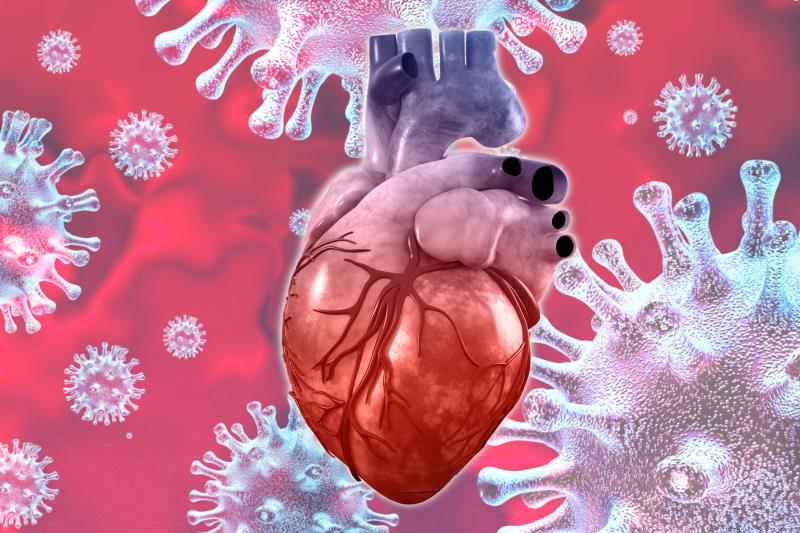CVD raises COVID-19 mortality risk





Individuals with underlying cardiovascular disease (CVD) may be at an increased risk of dying from COVID-19 while in hospital, according to a recent study.
“Our investigation confirms previous reports of the independent relationship of older age, underlying CVD, … current smoking, and chronic obstructive pulmonary disease (COPD) with death in COVID-19,” said the researchers. “Our results also suggest that women are proportionately more likely than men to survive the infection.”
Using the Surgical Outcomes Collaborative database, the researchers identified 8,910 patients with COVID-19 admitted at 169 hospitals in 11 countries in Asia, North America, and Europe, between December 20, 2019, and March 15, 2020 (mean age 49 years, 40 percent female, 19.3 percent Asian). Of these, 5.8 percent (n=515) died while in hospital, while 8,395 were discharged as of March 28, 2020. Patients were hospitalized for a mean 10.7 days, with a longer duration of stay among survivors vs non-survivors (mean 10.5 vs 7.5 days).
CV risk factors such as hyperlipidaemia, hypertension, and diabetes were present in 30.5, 26.3, and 14.3 percent of the population. About 11 percent of patients had coronary artery disease (CAD), while 2.1 and 3.4 percent had congestive heart failure (CHF) and a history of cardiac arrhythmia, respectively. Angiotensin-converting enzyme (ACE) inhibitors and angiotensin receptor blockers (ARBs) were used by 8.6 and 6.2 percent of patients, respectively, while 9.7 and 9.6 percent were on statins and non-insulin hypoglycaemic agents, respectively.
In-hospital mortality was greater among individuals aged >65 years compared with those aged ≤65 years (10 percent vs 4.9 percent; odds ratio [OR], 1.93, 95 percent confidence interval [CI], 1.60–2.41), and among current smokers vs former or non-smokers (9.4 percent vs 5.6 percent; OR, 1.79, 95 percent CI, 1.29–2.47). [N Engl J Med 2020;doi:10.1056/NEJMoa2007621]
Certain comorbidities were also independently associated with an increased in-hospital COVID-19 mortality risk. These included CAD (10.2 percent vs 5.2 percent among those without CAD; OR, 2.70, 95 percent CI, 2.08–3.51), CHF (15.3 percent vs 5.6 percent among those without CHF; OR, 2.48, 95 percent CI, 1.62–3.79), cardiac arrhythmia (11.5 percent vs 5.6 percent in those without arrhythmia; OR, 1.95, 95 percent CI, 1.33–2.86), and COPD (14.2 percent vs 5.6 percent in those without COPD; OR, 2.96, 95 percent CI, 2.00–4.40).
“The stress of critical illness and inflammation may unite in destabilizing pre-existing CV illness,” suggested the researchers. “Vascular endothelial cell dysfunction, inflammation-associated myocardial depression, stress cardiomyopathy, direct viral infection of the heart and its vessels, or the host response may cause or worsen heart failure, demand-related ischaemia, and arrhythmias,” they added, citing potential reasons for the increased mortality risk among patients with underlying CVD.
Women had a lower risk of in-hospital mortality (OR, 0.79, 95 percent CI, 0.65–0.95), as did statin (OR, 0.35, 95 percent CI, 0.24–0.52) and ACE inhibitor users (OR, 0.33, 95 percent CI, 0.20–0.54). However, the latter two could be chance findings and should be interpreted cautiously, the researchers noted.
There was no link between ARB use and in-hospital mortality (OR, 1.23, 95 percent CI, 0.87–1.74). Diabetes, hyperlipidaemia, and immunosuppressed conditions were also not tied to in-hospital mortality. However, the researchers acknowledged that the potential harmful association between ACE inhibitor or ARB use with in-hospital mortality could not be confirmed in this study.